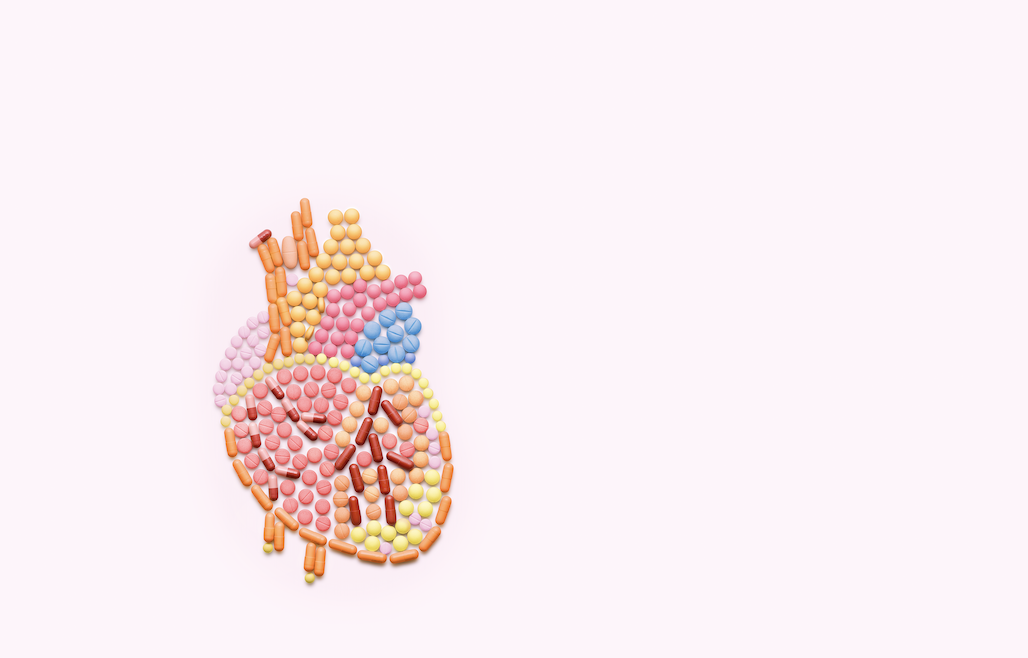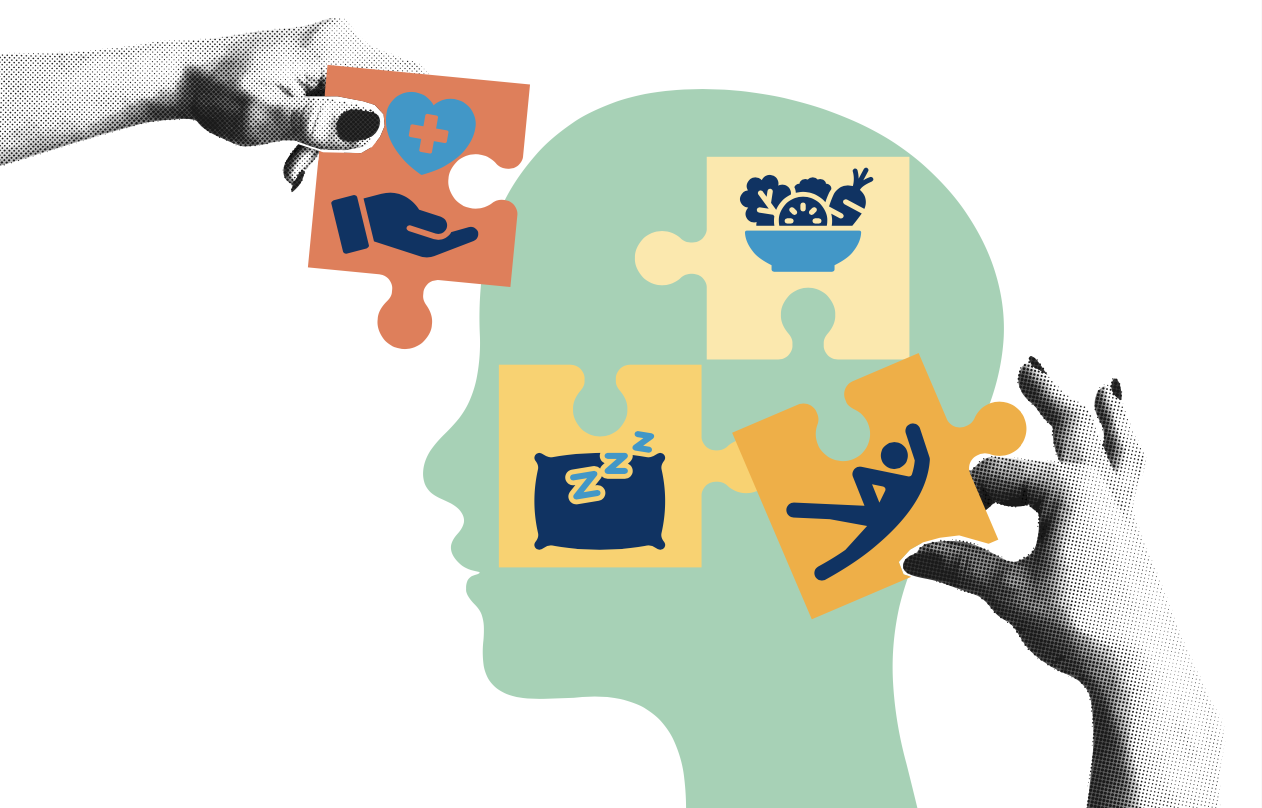With up to 33 per cent of adults experiencing chronic fatigue of six months or longer, it is more important than even to explore treatment of this complex and multifactorial symptom
Introduction
Fatigue is a disabling symptom in which physical and cognitive function is limited, and there is a complex and multifactorial pathophysiology.1 It is a common, non-specific symptom with a broad range of causes which include acute and chronic medical conditions, psychological conditions, medication toxicity, and substance abuse.2 Different definitions exist for “energy” or “fatigue”. Fatigue can be a perceived lack of energy or vitality,3 described as a difficulty or inability to initiate activity (subjective sense of weakness); reduced ability to maintain activity; difficulty with concentration, memory, and emotional stability; or sleepiness/uncontrollable need to sleep. Generally, energy is associated with feelings of wellbeing, stamina, and vitality and it allows people to perform their daily physical and intellectual activities, and enjoy social relationships.
Fatigue is a complex and wide-reaching state with no clear aetiology. Up to 33 per cent of adults can experience chronic fatigue lasting for six months or longer.1 Fatigue has a negative effect on physical and mental health and is associated with increased levels of anxiety and depression. Long term or severe fatigue can also lead to ageing, cancer, multiple sclerosis, and Parkinson’s disease.
Fatigue is also common in healthy people. Normal levels of fatigue – usually occurring after, for example, strong physical effort – are a protective signal from the body to tell us that rest is needed. Pathological fatigue does not improve with rest. It is usually more intense and longer lasting. Table 1 below describes some of the possible mechanisms behind pathological fatigue.
Table 1. Possible mechanisms involved in fatigue.1
| Endocrine system | HPA axis dysregulation |
| CNS | Reduction/polymorphism of neurotransmitters Increase in serotonin/dopamine ratio |
| PNS | Altered autonomic nervous system Stimulation of vagus nerve from inflammation |
| Metabolic activity | Metabolite accumulation Reduced free energy from ATP breakdown Limited oxygen/substrate availability Mitochondrial dysfunction |
| Glycogen storage | Reduction of glycogen storage leading to a drop in blood glucose levels |
| Immune system | Increase in pro-inflammatory cytokines (IL-1, IL-6, TNF alpha) Proliferation of immune cells |
| Anaemia | Reduced tissue oxygenation |
| Oxidative stress | Excess ROS formation |
| Others | Side effects from treatments, viral infection, circadian rhythm disorder |
Hypothalamic-pituitary-adrenal (HPA); central nervous system (CNS); peripheral nervous system (PNS); adenosine triphosphate (ATP); interleukin (IL); tumour necrosis factor (TNF).
Causes of fatigue
The most common causes of tiredness and fatigue include:4
- Not getting enough sleep or finding it difficult to fall asleep
- Unhealthy lifestyle (poor diet and lack of exercise)
- Stress or depression, life challenges like bereavement or looking after a new baby
- Hormonal changes (puberty, pregnancy, menopause)
- Illnesses
- Medical treatment, eg, chemotherapy.
On average adults need between six and nine hours of sleep. Increasing sleep duration and quality, if possible, may be sufficient to improve fatigue. A healthy diet with no meals before bed, regular exercise, and cutting out alcohol/smoking can help with this. Avoiding screens and exercise late in the evening, as well as winding down before bed (eg, read, listen to music or a podcast) can also help.
Certain medical conditions can lead to fatigue including diabetes, hyperthyroidism, anaemia, high BMI, and liver disease.1 Any prolonged, unexplained fatigue may be a symptom of an underlying condition (see Table 2) and should be assessed by a GP.
Table 2. Conditions that cause tiredness and fatigue.4
| Sleep apnoea | Tired during the day due to night-time waking; gasping, choking, or snorting noise at night; loud snoring |
| Iron-deficiency anaemia | Low energy, palpitations, shortness of breath, pale skin |
| Diabetes | Tired, thirsty, increased urination, weight loss |
| Hyperthyroidism | Tired all the time, feeling nervous, anxious, irritable, muscle weakness, tachycardia |
| Myalgic encephalomyelitis (ME) or chronic fatigue syndrome (CFS) | Extreme fatigue for ? three months that impacts quality of life, problems with cognitive function and concentration, flu-like symptoms |
Blood tests can be used to ascertain the cause of many cases of fatigue.
Types of fatigue
Muscle fatigue from intense and/or sustained physical activity has both central and peripheral components.1
Central fatigue, mediated by the CNS, is characterised by the inability to transmit motor impulses, with a decrease in the number/discharge rates of the motor units (ie, the combination of an individual motor neuron and all of the muscle fibres that it innervates). This phenomenon may also be linked to the depletion or accumulation of certain neurotransmitters – eg, serotonin and dopamine – which results in reduced neuronal excitability and depleted brain glycogen levels.
Peripheral fatigue results from the lack of response of, or loss of maximal force, in the neuromuscular system after central stimulation. This is associated with metabolite and free radical accumulation, limited oxygen and substrate availability, exhaustion of available glycogen, and increased levels of lactic acid.
Mental fatigue is a psychobiological state that manifests due to prolonged periods of demanding cognitive activity. Complicated information bombardment, noise, poor working conditions, disease, family issues, interpersonal tension, career frustration, and overwork are just some contributors to mental fatigue in today’s fast-paced and competitive environment.
Chronic fatigue includes chronic fatigue syndrome (CFS) and idiopathic chronic fatigue (ICF). CFS is diagnosed with six months or more of chronic fatigue, not alleviated by rest, accompanied by four of eight additional symptoms including headaches, sore throat, and myalgia. Physiological biomarkers of the disease have not been identified conclusively and the pathophysiology is unclear, although it is thought that viral infection, as well as endocrine, psychosocial, and immunological factors, are involved.
Acute fatigue, which is defined as lasting a month or less, is usually attributed to a recent life stressor or acute medical condition.2
Subacute/chronic fatigue lasts between one and six months and is often linked to an underlying medical or psychological issue, medication toxicity, or substance abuse. It is estimated that the origin of chronic fatigue can be identified in about two-thirds of people. In the remaining third with no identifiable cause, fatigue is classified as ICF, or attributed to CFS/ME if appropriate given the diagnostic criteria.
Management of fatigue
When patients seek treatment of fatigue with unclear aetiology, the following should be looked at:2
- Complete blood count
- Glucose, electrolytes, calcium, renal, and hepatic function
- Thyroid stimulating hormone
- Creatinine kinase (if muscle pain or weakness is an issue).
A supportive relationship between the patient and treating clinician should be established, with acceptance that chronic fatigue is a real and debilitating symptom. Therapeutic goals, for example, returning to work and managing daily activities, should be identified. Depending on the cause, possible treatments include cognitive behaviour therapy (CBT); advice on how to get better sleep; or advice on how to relax/change your lifestyle.
It is important to address any underlying medical conditions and fatigue should be monitored for improvement. Patients who still experience residual or idiopathic fatigue may benefit from a trial of antidepressants (SSRI/SNRI), CBT, or exercise therapy. CBT for chronic fatigue includes explaining the model for chronic fatigue, challenging beliefs and awareness of fatigue and reorienting these, promoting physical/personal goals, and attaining control of symptoms. Exercise therapy has shown comparable efficacy to CBT in unexplained fatigue in a three-month trial, although it does not specifically address cognition.
All of theB vitamins except folate play a role in energy production in the body; for example, vitamins B6, B9, and B12 are required for oxygen transport.3 Vitamin C also plays an important role in mitochondrial energy production while iron is required in oxygen transport for cellular energy production. Magnesium has a large role in production and use of adenosine triphosphate (ATP). The role of vitamins and minerals in cellular energy production strongly impacts functional and physiological outcomes in humans, including fatigue. Supplementation with vitamins and minerals can be beneficial in treating mental and physical fatigue, as well as in supporting cognitive and psychological functions.
There is some evidence that ginseng supplementation may help with certain types of fatigue, eg, a beneficial impact was observed on cancer-related fatigue from taking American ginseng, 2,000mg daily, over an eight-week period.5 However, in a separate randomised controlled trial looking at the effect of Siberian ginseng on chronic fatigue (no identifiable cause), no definitive reduction in fatigue levels was established.6
In a systematic review looking at pharmacological treatment specifically of cancer-related fatigue, methylphenidate, modafinil, and paroxetine were identified as superior to placebo.7
There is a limited range of established pharmacological treatments available for treatment of fatigue. Much of the assessment of available pharmacological treatments for fatigue have been tested on animals in terms of physical fatigability, and measured by, for example, improving exercise time.1 The translational success of this narrow definition of reduced fatigue to a predictable and meaningful effect in humans is varied. Patient-reported outcomes are usually used to assess the efficacy of an anti-fatigue treatment in humans; however, the inherent problem with lack of biomarkers for fatigue makes objective evaluation difficult.
As health professionals, pharmacists are often questioned about fatigue, and possible psychological or cognitive difficulties. Once any pathological cause is ruled out, the person’s vitamin and mineral intake may need to be assessed, and advice given – firstly on a balanced diet and food choices, and secondly on use of vitamin and mineral supplementation.3
References
- Luo C, Xu X, Wei X, et al. (2019). Natural medicines for the treatment of fatigue: Bioactive components, pharmacology, and mechanisms. Pharmacological Research, 148, 104409.
- Fosnocht K and Ende J (2024). Approach to the adult patient with fatigue. UpToDate. Retrieved 26 June 2024 from: www.uptodate.com/contents/approach-to-the-adult-patient-with-fatigue.
- Tardy AL, Pouteau E, Marquez D, et al (2020). Vitamins and minerals for energy, fatigue and cognition: A narrative review of the biochemical and clinical evidence. Nutrients, 12(1), 228.
- National Health Service. (2023). Tiredness and Fatigue. Available from: www.nhs.uk/conditions/tiredness-and-fatigue/.
- Barton DL, Liu H, Dakhil SR, et al (2013). Wisconsin Ginseng (Panax quinquefolius) to improve cancer-related fatigue: A randomised, double-blind trial, N07C2. Journal of the National Cancer Institute, 105(16), 1230-1238.
- Hartz AJ, Bentler S, Noyes R, et al (2004). Randomised, controlled trial of Siberian ginseng for chronic fatigue. Psychological medicine, 34(1), 51-61.
- Chow R, Bruera E, Sanatani M, et al (2023). Cancer-related fatigue – pharmacological interventions: Systematic review and network meta-analysis. BMJ supportive & palliative care, 13(3), 274-280.







